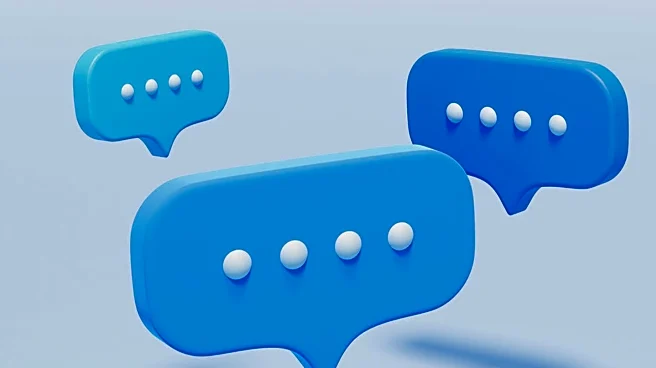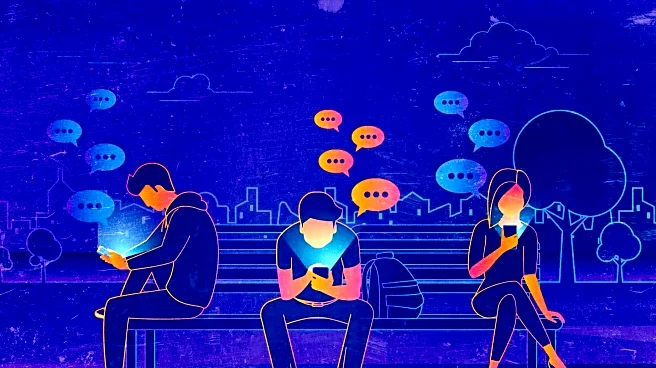What is the story about?
What's Happening?
The word 'sure' in text messaging has sparked a debate over its perceived meaning and impact on communication. While traditionally signifying affirmation and certainty, 'sure' can convey a lack of enthusiasm or indecisiveness in digital conversations. This issue was highlighted by Isabel Steckel, who shared a personal experience on social media, leading to widespread discussion. Sociolinguist Cynthia Gordon from Georgetown University explains that the interpretation of 'sure' is context-dependent and can vary by generation. Younger individuals often expect more enthusiasm in texts, while older generations may not. The absence of non-verbal cues in text messages can amplify the perceived passivity of 'sure,' making it seem less enthusiastic than a direct 'yes' or 'absolutely.'
Why It's Important?
The discussion around the word 'sure' in text messaging underscores the complexities of digital communication. As texting becomes a dominant form of interaction, understanding the nuances of language is crucial for effective communication. Misinterpretations can lead to misunderstandings and affect personal relationships. This issue highlights the need for awareness of how language is perceived in different contexts, especially in the absence of vocal tone and body language. The debate also reflects broader societal shifts in communication preferences and expectations, particularly among different age groups. Businesses and individuals alike must navigate these nuances to maintain clear and positive interactions.
What's Next?
As digital communication continues to evolve, there may be increased emphasis on understanding and teaching the subtleties of language in text-based interactions. This could lead to more research into how different words and phrases are perceived across various demographics. Additionally, there may be a push for developing new communication tools or features that help convey tone and intent more clearly in digital messages. Stakeholders in technology and communication industries might explore innovations that bridge the gap between text and in-person communication, potentially incorporating elements like tone indicators or enhanced emoticons.
Beyond the Headlines
The debate over 'sure' in text messaging also touches on broader cultural and linguistic trends. It raises questions about how language evolves in digital spaces and the role of technology in shaping communication norms. This issue may prompt discussions about the importance of empathy and understanding in digital interactions, encouraging individuals to consider the impact of their word choices. Furthermore, it highlights the potential for language to both connect and divide, depending on how it is used and interpreted. As society becomes increasingly reliant on digital communication, these considerations will likely play a significant role in shaping future communication practices.
AI Generated Content
Do you find this article useful?













